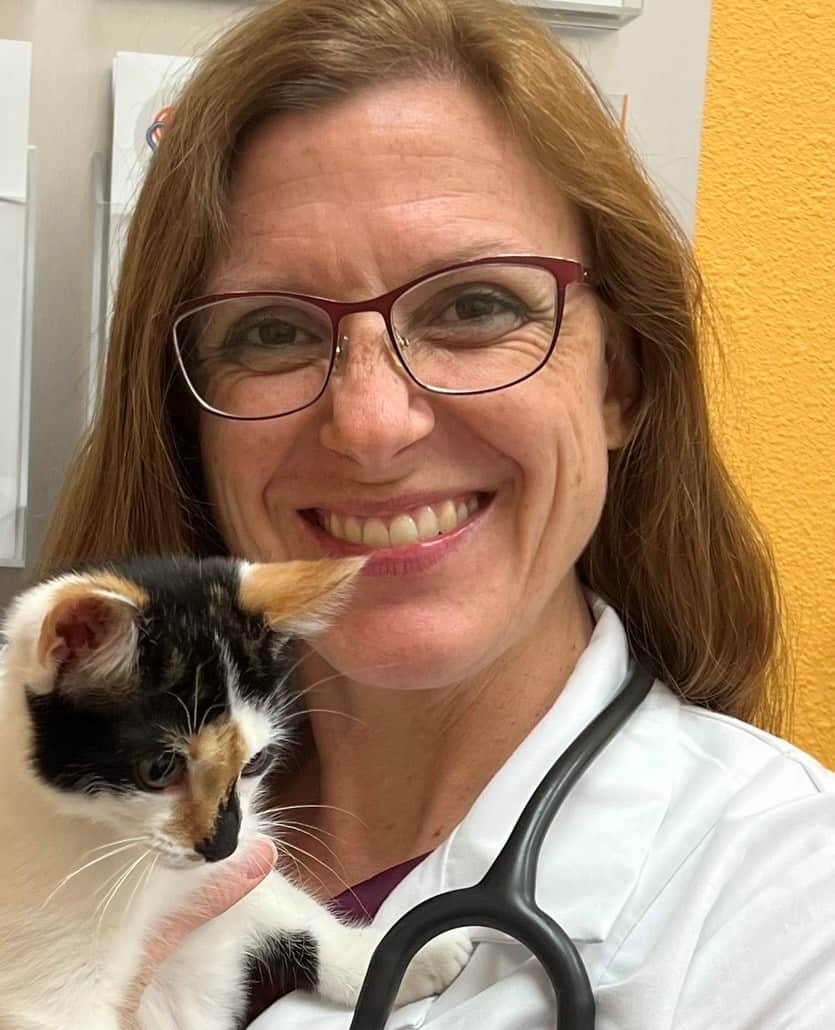Using Acellular Liquid Amnion to Treat Equine Joint Disease

Approximately 25% of the equine population suffers from some type of joint disease. Therefore, researchers are constantly exploring new treatments to improve horses’ soundness and extend their working careers. An acellular liquid amnion allograft might fill a void in the joint disease arena, said Danica Wolkowski, DVM, of Momentum Equine Veterinary Specialists, in Alberta, Canada, during her presentation at the 2023 American Association of Equine Practitioners Convention, held Nov. 29-Dec. 3 in San Diego, California. “Most of the first-line joint therapies are aimed at symptomatic treatment, which relieve the symptoms of joint disease but do not change the course of disease,” she explained.
Equine liquid acellular amnion (ELAA) is a regenerative therapy that also has the potential of being a disease-modifying treatment for joint disease in horses. Although ELAA is considered a relatively new therapy, equine veterinarians across the U.S. and Canada have already used it for a variety of applications in more than 17,000 horses (including 8,000 joints).
This product is a liquid formulation derived from amnion and amniotic fluid at the time of live foaling, said Wolkowski. Researchers remove the cells in a sterile process and cryopreserve them for future use. The collection process poses no risk to the mare or foal, said Wolkowski.
“Most of its applications in horses have been extrapolated from the human medical field,” said Wolkowski. “It is currently being used by veterinarians as a treatment for corneal ulcers, wounds, and tendon and ligament injuries. Most recently, we have begun to examine liquid amnion as an intra-articular therapy in horses. All these uses have already been examined in people and have had successful outcomes.”
Using Acellular Liquid Amnion for Equine Joints
As a first step toward using ELAA allografts in equine joints, Wolkowski and colleagues wanted to demonstrate this product’s safety in healthy joints, so they recruited eight healthy adult horses without systemic disease and carpal (knee) pathology (meaning they had normal knee anatomy). The researchers injected one of each horse’s middle carpal joint with 1.5 mL ELAA, while they injected the opposite middle carpal joint with 1.5 mL sterile saline as a control.
On Days 1, 3, 5, and 10 after injection, the researchers performed follow-up examinations. This included completing a full physical examination, measuring carpal joint circumference, performing subjective and objective lameness examinations, and analyzing synovial (joint) fluid—looking at total protein, total nucleated cell counts, cytokine (inflammatory mediator) profiling, and the acute-phase protein serum amyloid A (SAA). They performed additional synovial fluid sampling at Days 20 and 30 to examine ELAA’s longer-term effects in the joint.
“One of the study goals was to look for signs of ‘joint flare,’ which is a rare complication of any joint injection that is generally self-limiting,” said Wolkowski. “However, the signs are similar to septic arthritis, which is a life-threatening condition in horses. Therefore, it is very important for the veterinarian to be able to distinguish between the two conditions as their course of treatment is much different.”
None of the horses in the study had any physical exam abnormalities, including no visible lameness at the walk or increase in joint circumference during the study. Also, researchers saw no significant lameness in the treatment limbs over control limbs at the trot in both subjective and objective measures of locomotion.
The synovial fluid analysis revealed that both treatment and control middle carpal joints had elevated total nucleated cell counts and protein levels on Days 1 and 3 post-injection. However, elevations in total nucleated cell counts in the limbs injected with ELAA were higher. “A transient inflammatory reaction is seen and expected in the joint any time a foreign substance is injected, and what our results show is that this response peaks at Days 1 and 3 after injection,” said Wolkowski. “Therefore, we can hopefully use this guideline to monitor for joint flare in clinical cases.”
Finally, Wolkowski measured 12 different cytokines in synovial fluid during the study, and there were no significant differences between the control and treatment limbs. There was one important anti-inflammatory cytokine, however, that was significantly higher in joints treated with ELAA.
“Interleukin-1 receptor antagonist (IL-1RA) was significantly increased in limbs treated with ELAA on Days 1 and 3 after injection,” she said. “Interleukin-1 is a primary proinflammatory cytokine known to be involved in the pathogenesis (development) of osteoarthritis. This is an exciting finding, because IL-1RA prevents interaction of IL-1 with its receptor and therefore prevents its damaging effects. This indicates that ELAA could be beneficial for treating osteoarthritis.”
Take-Home Message
Wolkowski concluded her presentation saying that ELAA appears safe for use in healthy equine joints. Further, the cytokine profile she performed supports ELAA’s potential as a joint treatment in horses. Randomized, controlled trials in horses with osteoarthritis are the next step to understanding how ELAA interacts with the diseased joint environment, she said, and researchers should work to determine specific treatment protocols.

Written by:
Stacey Oke, DVM, MSc
Related Articles
Stay on top of the most recent Horse Health news with















